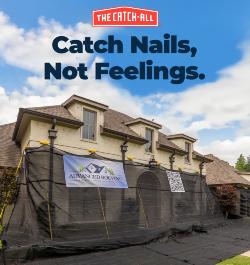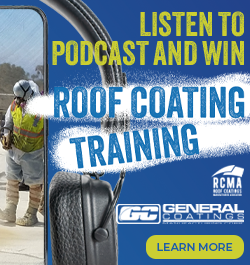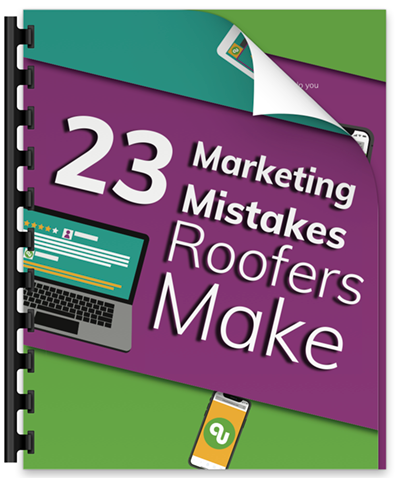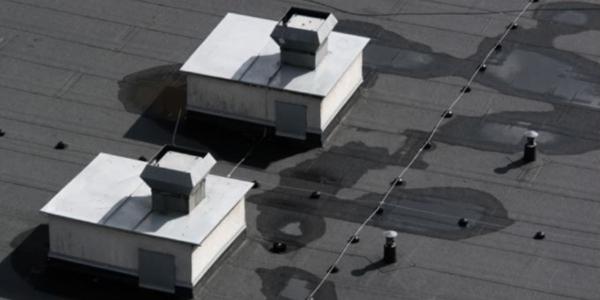Measuring Roofs with Drones

New Technology for Roofing Contractors
by Jason Moore, RoofSnap
Drones are one of the hottest topics in the roofing industry today. The idea of using a high-tech flying camera to reduce your time spent on dangerous roofs is too tempting to ignore... especially, if you're just a big kid at heart like all of us here at RoofSnap.
I always wanted a remote control helicopter growing up, but they were way too expensive and difficult to fly. Today's drones have solved those issues and made all of our childhood dreams a reality. The next step is to justify the purchase of this high-tech "toy" by discussing the actual business value that they provide.
Why buy a drone for your roofing company?
- Inspect difficult to access roof sections and reduce time spent in the "danger zone"
- Create detailed aerial measurement reports
- Create professional quality footage of your projects to use in your marketing materials
- Make a lasting impression on your customers while closing more sales
Now that you've convinced your accountant, business partner, boss etc. that you need a drone. Here's what you need to know...
Step 1 - Picking The Right Drone
There are a ton of options out there and the truth is, we're not experts on everything drone. We've never built a drone from a kit or setup our own video up-link and we have no intentions of doing so. We wanted something that was ready to fly right out of the box so we chose the biggest consumer drone company out there, DJI. DJI makes a couple of excellent drones that are a great place to start.
The DJI Phantom 3 and 4: (About $1,000 - $1,500) The current DJI Phantom 4 and the earlier DJI Phantom 3 are cost effective and capable drones that will get you up and running in minutes. (We had a Phantom 2, which was great as well but the camera had a wide angle lens and required lens correction before getting accurate roof measurements from the image. The newer models don't have this issue, making the aerial imagery ideal to use.)
The DJI Inspire: (About $3,500) The Inspire is a professional grade flying camera that's a step above the Phantom. If you have the budget, the Inspire will do everything you want and more.
Of course, there are a ton of other options out there but we'll stick to the ones we know. Here are a couple of things to look for if you wander off the beaten path:
- Capable of High Altitude: You'll need a drone that's capable of flying to about 400 feet, which is the maximum allowed by the FAA. This height is necessary to reduce any perspective distortion on the image in order to get accurate measurements.
- A Camera that can Look Straight Down: Some of the less expensive drones can't actually tilt the camera straight down to get a direct overhead shot of the roof. Straight shots are needed in order to get correct measurements from the drone.
- Battery Life: You should be able to get 20 minutes or more out of a battery. You don't want the charge to run out in the middle of a roof inspection and spare batteries are usually pricey. Make sure you get plenty of flying time on a charge.
- Capable of Handling Wind: You'll want something that can fly when it's a bit breezy. A well-built drone with powerful motors should be able to fly on most days.
- HD Video Uplink: You'll want to see HD video of exactly what the drone is seeing. This makes flying easier and allows you to spot trouble areas on the roof.
- GPS Guidance: It is amazingly convenient to fly a drone with GPS. When you let go of the controls, it should stay pretty much where you left it.
Step 2 - Getting Some Practice
So you just purchased a $3,500 Inspire drone and are excited to inspect your first roof with it. Here's how to reduce your chance of bouncing it off of a roof on your first flight in front of a customer and save yourself the cost and shame of a crash. (I won't point fingers, but someone here in the office still has not been able to live down the embarrassing crash of our old Phantom 2.)
What's the trick? Try a little quad rotor drone can be found on Amazon for about $20 and the basic controls are the same as the big ones. They're surprisingly rugged and can be bounced off of the walls in your house or office dozens of times before being damaged. They are also MUCH harder to fly. Once you've successfully piloted one of these around your living room, you'll be amazed at how easy the big ones are.
Step 3 - Legal Stuff
The FAA recently released some new laws affecting drone flight. Be sure to check out our recent blog http://blog.roofsnap.com/blog/measuring-roofs-with-drones-and-roofsnap-0 or download the PDF at http://www.faa.gov/uas/media/Part_107_Summary.pdf.
[gaevent src="https://rooferscoffeeshop.com/rcs.php?gaplg=604"]























Comments
Leave a Reply
Have an account? Login to leave a comment!
Sign In